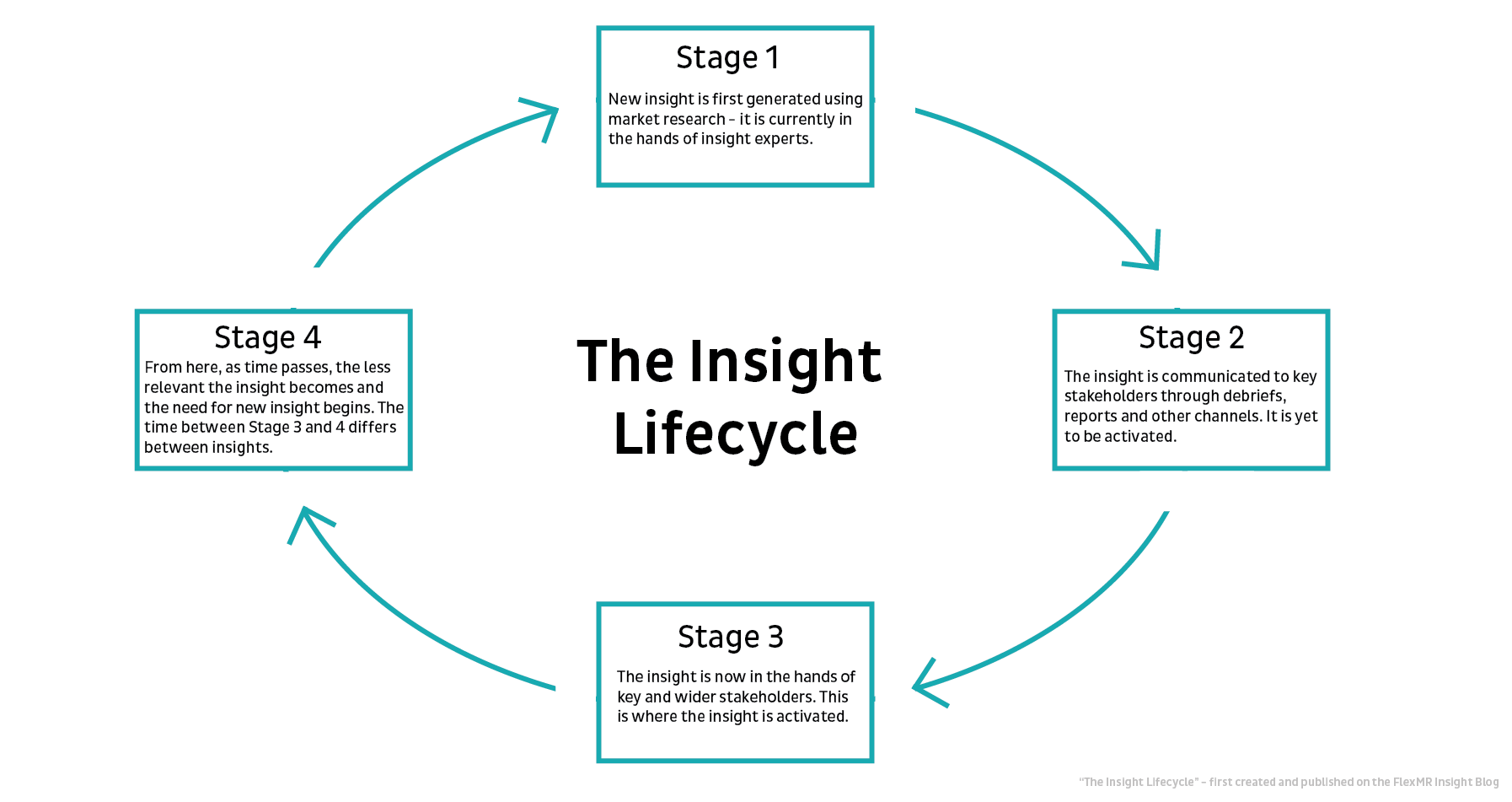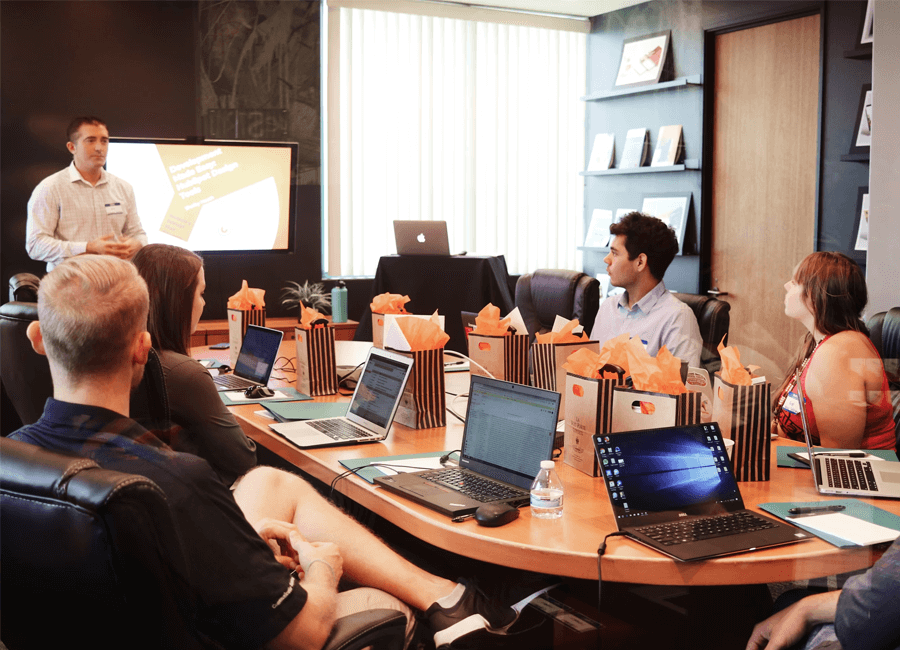Have you ever thought about the typical lifecycle of the insights that market researchers generate? Once you do, you might start to consider questions such as:
- What is the typical lifecycle of an insight?
- Where does the lifecycle of insight start?
- Where does it end?
- Is that end influenced by the people who use them?
These are some key questions that insight experts, advocates and stakeholders should consider regularly, whether they’re in-house or agency-side. I would argue that the current answers to these questions throughout the industry are: 1) shorter than it should be, 2) when the insight is first discovered, 3) it ends when it stops being used, and 4) yes, the end of an insight is influenced by the people who use them.
But the answers you find will differ depending on who is using those insights – for some insight-driven stakeholders, the lifecycle of insight might be longer and therefore cannot be extended too much further without risking key decisions being informed by out-of-date insights. From beginning to end, when they’re first generated to when they’re last activated, the lifecycle of insight is something that insight experts and stakeholders can exercise some control over – and increasing the lifecycle of insights generated would lead to some pretty drastic changes for the insights industry and the businesses in which insights are used.
| Tweet This | |
| What is the typical lifecycle of market research insights? How do we extend this lifecycle to help stakeholders fuel more impactful decisions? |
The Lifecycle - Diagram and Impacts
A typical insight lifecycle looks something like this. The first stage is when the insight is first formed through raw data analysis. When generated well, the insight in this stage is highly relevant. Still, it remains in the hands of insight experts until an engaging communication method is found so that stakeholders will pay attention to the insight – this is a stage known well by all insight professionals.
The challenges surrounding insight communication have hindered the movement to the next stage and the power of insights in decision-making processes. The main challenge, is to communicate the insight before it loses its relevance.

Stage two is the stage that stakeholders are most familiar with as they receive the insights they request through this stage. Despite the communication methods used, it is the timing of this stage that makes it most impactful – due to its strong relevance in this stage, the sooner the insight is delivered, the more impactful it is on stakeholder decisions.
The third stage is the stakeholder stage. The insight has been communicated, and it is up to stakeholders to use it in as many decisions as possible until its relevance runs out – if the relevance runs out. Some insights have expiration dates, while others are longer-lasting. Even if insights become irrelevant, they could still be used as historical benchmarks for other insights to understand how fast and how much something has changed. Stakeholders from as many teams and places should use insights as much as possible before stage four.
Stage four is when the insight loses most of its relevance, and while it can still be used in some form or decision, there is a need for new insights into the new situation. It is the gap between stages three and four that we can extend the influence of insights, and increase the lifecycle of insight. This will have several impacts on all parties involved including:
- Increasing the ROI of market research per insight used
- Decreasing the amount of time spent on repeat research
- Saving the money spent on repeat research for new research and other ventures
How to Increase the Lifecycle of Insights
So how do we increase the lifecycle? By using the current insight generated as many times as possible while they’re still relevant. There are a few ways we can achieve this:
1. Creating a Centralised Hub of Insights
A centralised hub of insights where stakeholders can access and view the data and insights stored within will enable multiple use of the same insights by all stakeholders across an organisation. This way works best with an in-house insight team and a technology with a UI that can compare datasets, display new and historical insights, and, as a bonus, showcase what other stakeholders have done based on those insights.
This hub will be a task to create, however the benefit will be worth it. It will result in more people accessing and using insights continuously, and increasing the lifecycle of insight in the organisation. Once this hub is erected and ready for use, the stakeholders' ability to become customer salient is there for the taking.
2. Stakeholder-Driven Usage
One large challenge most insight professionals face in the industry is persuading stakeholders to activate the insights we generate on their request. While they want to know what’s happening and why, using that information in all decisions across their business is still something of an obstacle. The use of insights is currently insight expert-driven, whereas, if it were stakeholder-driven, those insights would be used to their full potential and regularly within the time between stages 3-4. So how do we move the onus onto stakeholders, and how do we get them to act on insights on their own?
Educating stakeholders on the power of insights is the first step we can see being taken across the industry. With new articles from industry publications, agency blogs, and more are being accessed and used by stakeholders to educate themselves, as well as by insight teams to fuel their stakeholder education programmes. Once stakeholders are educated on the value of insights, using the other two sub-sections to help increase access to insights so stakeholders can put their knowledge into action is the next step.
| Tweet This | |
| Increasing the lifecycle of insights not only increases the ROI of market research, but also fuels more decisions than stakeholders could ever imagine. |
3. Embedding Insights into Working Practices
This section can come after the ‘educating stakeholders’ action discussed above, or it can be part of the actions towards customer salience as per FlexMR’s Customer Salience Framework®. Embedding insights into working practices will take a large culture shift for many businesses, from their traditional experience-based decision-making processes to more insight-driven processes, but there are ways in which we can encourage this transition.
Firstly, through the use of Insight Advocates. An Insight Advocate is a member of a team within the stakeholder organisation, and the goal here is to have an Insight Advocate on all teams within the business – changing the traditional goal of having a seat at the table to having many seats at many tables. This continuous presence of someone who knows the current customer insights, checks the centralised insight hub regularly, and stands as a connection to the insight experts generating the data and insights is crucial. These people are guides to be there when stakeholder teams falter.
Secondly, a top-down approach might still work depending on the current company culture. If the C-suite or senior management are all insight-driven or have an Insight Advocate to guide them, then this will filter down through the decisions and help guide the rest of the business.
But none of this is possible without having dedicated communication channels to deliver the insights from the insight team to the stakeholders. So creating a few dedicated channels such as a Slack or Teams channel, a regular email newsletter and other methods that stakeholders will pay attention to are vital.


















